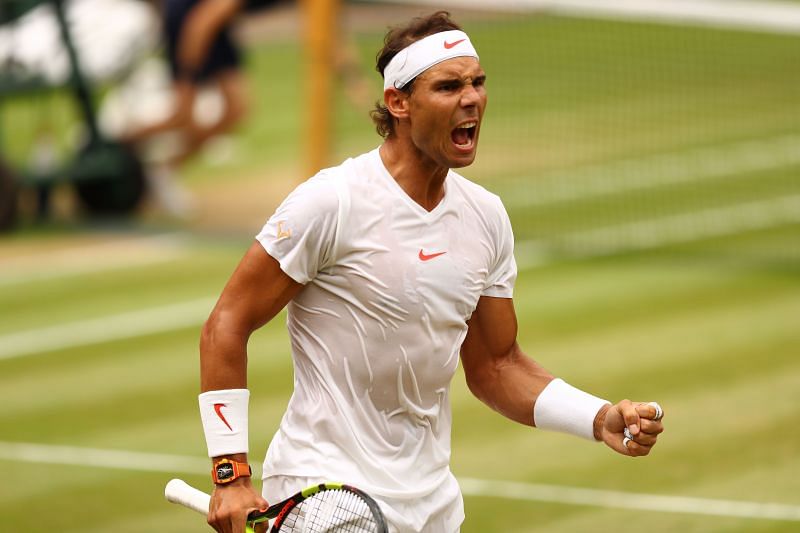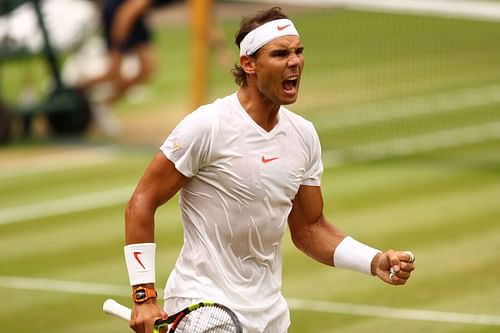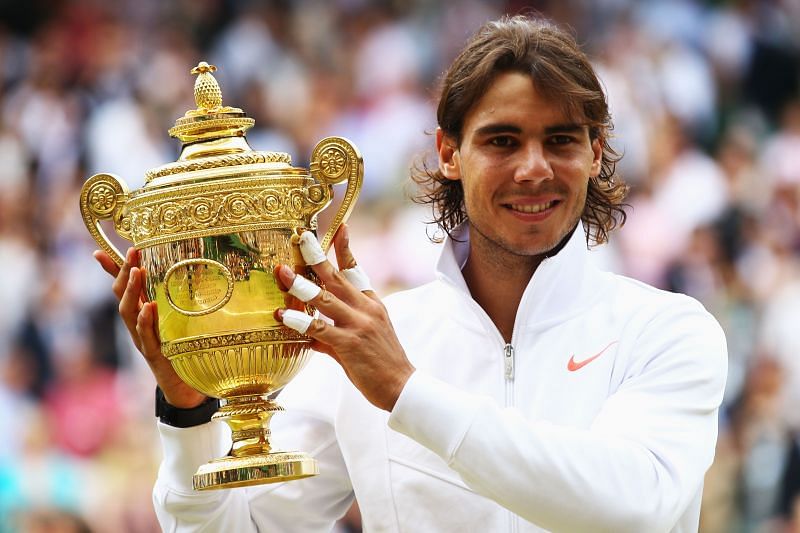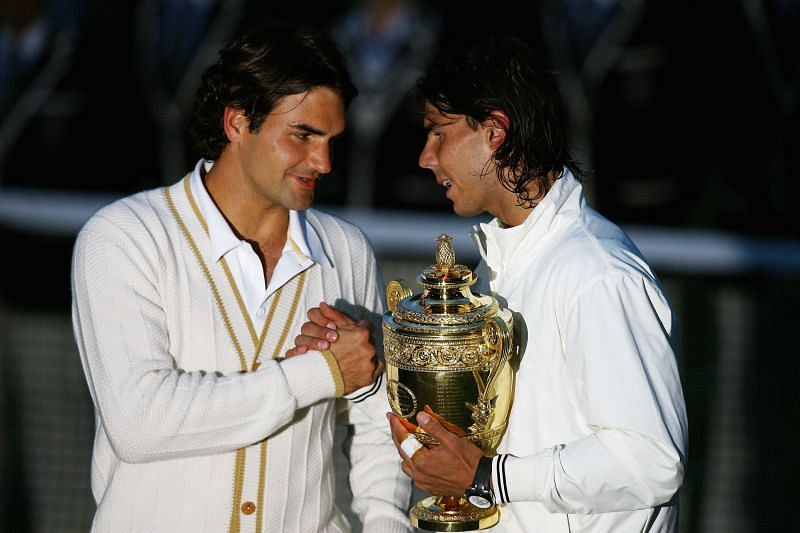
Rafael Nadal plays better on grass than hardcourt, claims Francisco Roig

Rafael Nadal's tryst with grasscourts has been quite bittersweet. The two-decade-long courtship has been laced with both ups and downs, with the 2012 loss to Lukas Rosol widely considered as one of the lowest points of Nadal's career. But the Spaniard did achieve the ultimate glory on the surface, and now his alternate Francisco Roig has elaborated on how he learned to adapt to the surface.
Rafael Nadal’s record on grass isn’t shabby by any means; it’s just vastly overshadowed by his achievements on clay. The 12-time French Open champion has won four titles on grass - two at Wimbledon (2008, 2010), one at Queens Club (2008) and one at Stuttgart Open (2015). He has also been a grasscourt runner-up on three occasions, all of which came during a stunning run of five consecutive finals at the SW19 (2006-2011; not counting 2009 as he had withdrawn).
Rafael Nadal’s game is custom-made for clay, which is why he has been so successful on the surface. His speed, agility and topspin-heavy forehand are particularly suited to the slow surface, and the bounce on dirt gives added momentum to his powerful groundstrokes. Grass on the other hand ensures that the ball stays low and zips around quicker, which nullifies Nadal's natural strengths and also hurts his knees.
To make a mark on grass and especially at Wimbledon, Nadal had to adapt. And as Roig explained, he did that very early in his career.
Rafael Nadal had a ‘great capacity to adapt on grass': Roig
Francisco Roig has been a constant presence in Rafael Nadal’s coaching team since 2015, but has known him for nearly two decades. While Roig hasn’t helped add any major grass laurels to the cabinet of Rafael Nadal, he knows what it took for the 19-time Slam champion to succeed on an alien surface.

Roig recalled the first time he saw Nadal play on grass, when the lefty was just starting out on tour. The 52-year-old was struck by the flexibility in Nadal's game, and immediately knew that he would one day overcome the obstacles on his less favored surface.
"The first time I saw Rafa play on grass was back in 2002 or 2003," Roig said. "At that time I was still a coach of Feliciano (Lopez) and I had not started working with him. Rafa came to play the junior. Since he had no one to rally with, I started playing with him that day.”
“From the first moment I saw that he had a great capacity to adapt on grass. Obviously, it took a series of years to gain that confidence and the way to play on grass. But Rafa has a quality, among many others, that for me is incredible and makes him different from the rest: he knows how to overcome adversity like no other. Little by little he found a way to play. I think this is one of Rafa's differential points - that he always finds solutions," he added.
Rafael Nadal is indeed renowned for doing whatever it takes to win a match. That has naturally transferred to the practice courts as well, where he had to learn to adapt his game to suit grass. He began standing closer to the baseline, took returns on the rise and began to hit the ball flatter. The changes to his game helped greatly during his 2008 Wimbledon campaign, where he would go on to beat legendary grasscourter Roger Federer.

There is a before and after on grass for Rafael Nadal: Roig
Roig also reflected on the mid-career drop that Rafael Nadal faced on grass. After reaching five consecutive finals from 2006 to 2011, he failed to make another semifinal until 2018. During that barren run, he suffered shockingly early losses to the likes of Rosol, Steve Darcis and Dustin Brown.
Roig believes Rafael Nadal's grasscourt career can be divided into two halves, but that his later years have now completed their evolution - as evidenced by consecutive semifinal showings in 2018 and 2019.
"There is a before and after on grass for Rafa," Roig said. "At first he played with great intensity and was very intimidating to his rivals. He was able to move better than now, since he was much younger."
“Later, he has shown such a great evolution in the game that, for me, he almost played better on grass than on hard court. I think he makes better tennis. He likes to play on grass when he has time to adjust,” he added.
The 52-year-old finished with a word of praise for Rafael Nadal's underrated grasscourt skills. Roig believes the fact that Nadal has made so many finals and semifinals at Wimbledon despite arriving there on the back of a grueling Roland Garros campaign each year, shows good he is on the surface.
"I would rank him very high among the Wimbledon players," Roig said. "We are talking about Rafael Nadal, who by his own weight you have to put among the best on any surface in history."